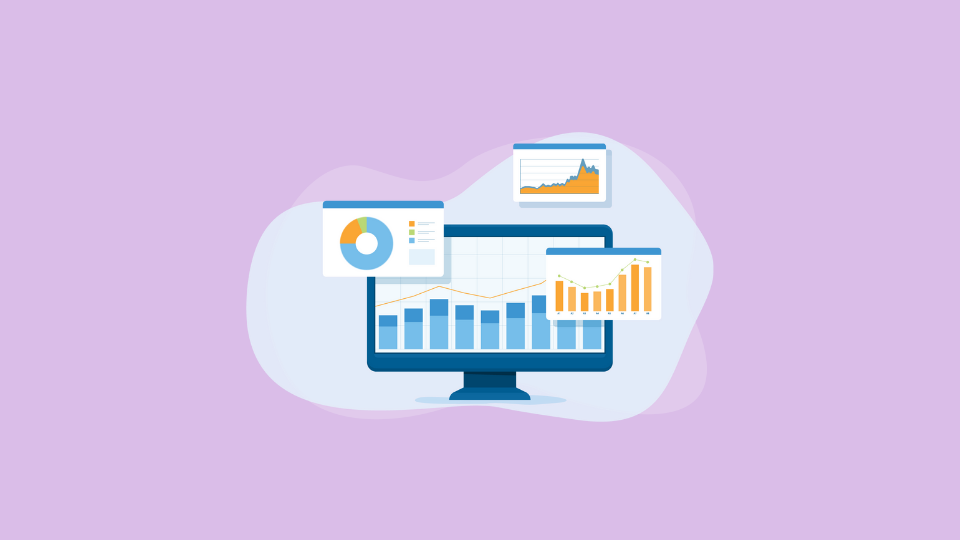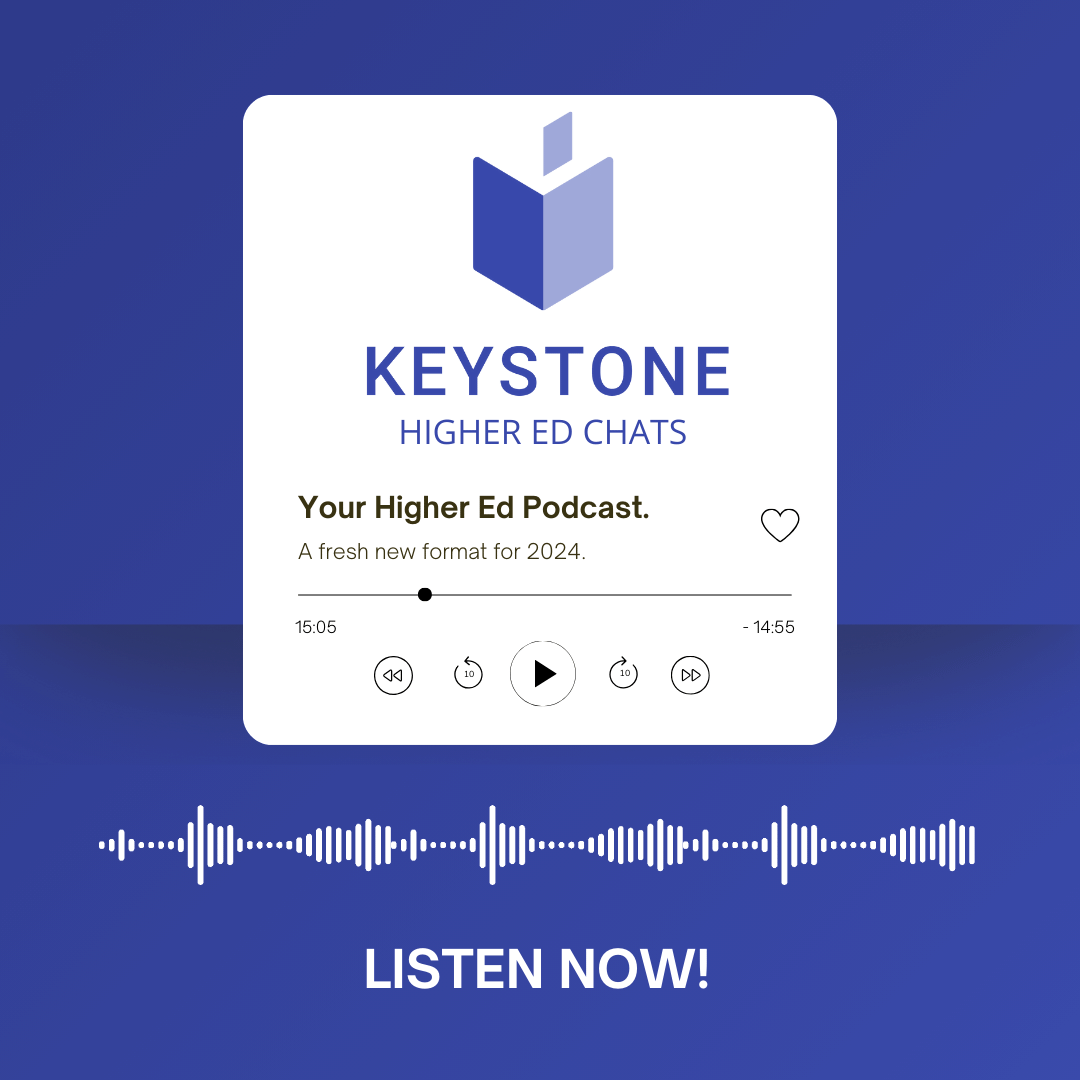- SERVICES
- HIGHER EDUCATION MARKETING
- ENGAGEMENT & ENROLLMENT MANAGEMENT
- STUDENT RECRUITMENT AGENCIES
- PROFESSIONAL EDUCATION & TRAINING
- WHO WE ARE
WHO WE ARE
Learn more about Keystone Education Group, including our leadership structure, why choose Keystone as your educational partner, and company press releases.
QUICK LINKS
- RESOURCES
RESOURCES
Find a range of helpful resources to help with your educational marketing. From on-demand webinars, reports & data, to customer testimonials and our downloadable media kit.
QUICK LINKS
- NEWS
- REQUEST A CALL

- Keystone Higher Education News
- Utilizing Data to Improve the Student Journey
Every university wants to know what can be done to improve the student journey. Fortunately, there’s a relatively easy answer to this age-old question: utilize data.
Nowadays, universities have a plethora of data at their disposal, much of which can be used to help understand how students make critical decisions, such as which university to attend. While getting students to commit to your school is important, it's equally important to make sure they stay. This is where understanding a student’s journey from start to finish can come in handy.
Admissions
When students begin looking into which school they would like to attend, they have a big decision to make. Equally, universities need to make sure those students are right for their school and program. As a result, gathering data during the admissions process can prove helpful. Universities can look at how many students start the application process, how many complete it, and what barriers might have prevented them from finishing. Additionally, they can also access website analytics to find out how many students are visiting their website, how long they stay, how many clicks they’re getting, and what pages are the most popular. This can help inform areas of improvement, such as updating website language, lowering wait times for inquiry replies, and providing opportunities to follow up on leads. This is an area Keystone Education Group can provide assistance with recruitment, by offering a deeper look into students’ browsing habits, as well as helping schools understand what captures a prospective students’ interest.
Student experience
Once students have made a commitment to a university, it’s up to the school to figure out how to get them to stay. Students failing to complete their degree of study is a real issue: “A 2014 report by the National Student Clearinghouse Research Center states: “Over the past 20 years, more than 31 million students have enrolled in college and left without receiving a degree or certificate.”” Students who don’t form connections within the first few weeks of school, don’t create a peer group, or are unable to find activities, clubs, or organizations that meet their interests are more likely to withdraw from school. Homesickness is also a major cause of students leaving school, or struggles with physical or mental health. They may also leave because they find their classes unstimulating or uninteresting, they are struggling with their finances, or for a myriad of other reasons. However, this is something student data can help mitigate.
Gathering student data as students are onboarded, such as during orientation, during move-in, during first weeks of classes, and after fall or Thanksgiving breaks can help administrators get a pulse on where students are. Data can be gathered around specific topics, anything from dining hall satisfaction, to interest in courses, to programs being offered, and to help gather information on student and staff interactions. Utilizing this data, administrators can figure out whether to change course with programming offered in residence halls, to provide more support to students in various areas, or to increase the flavors of ice cream offered in the dining hall. While some of these things may seem small on the grand scale of running an institution, to students it can make or break their collegiate experience.
Academics
Another way student data can be utilized is to help faculty identify students early on who may be struggling, and reach out before they fail or drop out of school. “By using predictive analytics, universities can track the progress of students within their given major and career goals and assess the likelihood of them being successful versus dropping out.” This means students who are flagged early on in their academic careers as being at risk can be specifically targeted for academic assistance. This might involve referrals to tutoring services, creating accommodations to help enhance academic success, or finding the student a new major.
Additionally, faculty can utilize student data in order to help them be more effective in the classroom. While the COVID-19 pandemic rapidly forced many schools online, there were a lot of bumps in the road. In instances where rapid changes may cause disruptions, schools can lean on data to learn more about the student educational experience, and how they can correct course to keep students engaged. By using things like predictive analytics, “...universities can use an online program to measure a student’s engagement with a specific course. As the student’s interactions with the program progress, that data is processed and evaluated.”
Career
Finally, every student wants to know that they’re going to get a good return on investment, or ROI from their education. Students want to be assured that they will leave university with the correct skills to secure a good paying job in their chosen industry. More students are making decisions about which university to attend with plans for what happens after those four years already in mind. Therefore, universities need to be prepared to offer that data, often to prospective students as well as current students.
Following students after they leave university can help provide this critical data. Tracking alumni progress, including their satisfaction with the education they received at the university, what they’ve gone on to do, and where their career has taken them can provide valuable information for stakeholders. Additionally, alumni can be utilized to share their experiences with prospective or current students, which provides a real-life opportunity for demonstrating success.
Remember, data is there to serve a purpose. While it might feel overwhelming at first to figure out how to gather, analyze, and manage student data, it’s worth it in the long run. From securing student commitment, to retention, to the classroom, and beyond, student data is an invaluable tool in improving the student journey.
Related Tags
Just For You
Top Picks
Higher Ed Chats Podcast
Listen to the latest episodes of our Higher Ed Chats Podcast - new format for 2024. Hear from Higher Ed thought-leaders from around the world!

Webinar: Dos & Don'ts of Higher Ed Social Media
.png?width=500&name=Social%20Media%20Webinar%20March%2024%20Banners%20(3).png)
Join our live webinar on 27th March to hear from a panel of Higher Ed Social Media experts.
Subscribe
to get the latest news and updates





